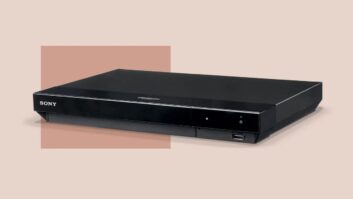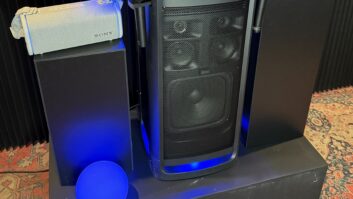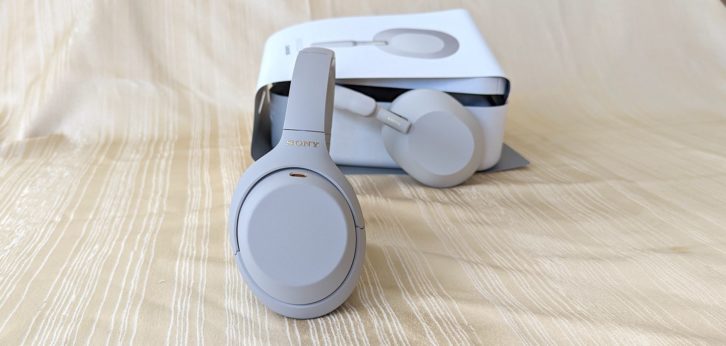
The Sony WH-1000XM5 came out a few months ago and it’s a critical success. I’m one of the many experts that gave it a favorable review and ranked it high on Laptop Magazine’s list of the best noise-cancelling headphones available. I’m also the person telling you its older sibling, the WH-1000XM4, is the better investment.
Wow, really? Yep. Hear me out.
Sony, Apple, and numerous other headphone makers have pushed hard to convince the buying public that upgrading their current gadgets with the latest versions is essential. It’s not.
Consumers aren’t just more budget-conscious these days – they’re realizing what they currently have isn’t all that different from the previous model – all bells and whistles accounted for. This applies to Sony’s Mark Series noise-cancelling headphones.
As someone who owns both models and spent most of his time swapping between the two over the summer, let me tell it to you straight. See why I’m sticking with the Sony WH-1000XM4 as my main noise-cancelling headphones, and why you should consider the same.
Are the Sony WH-1000XM5 that much of an upgrade?
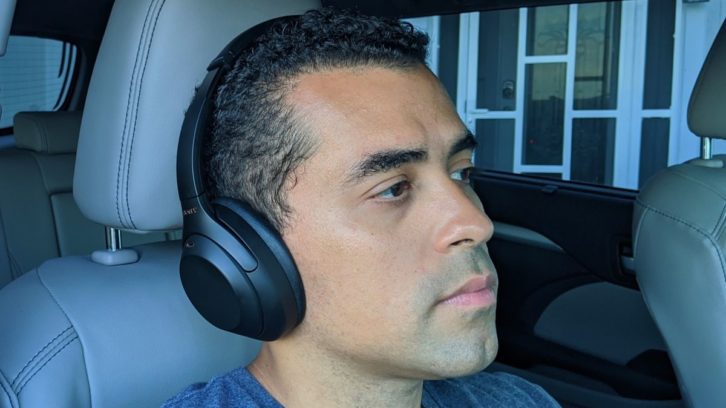
There are certain things the WH-1000XM5 does better than the WH-1000XM4, and vice versa.
The WH-1000XM5 has a stronger spec sheet, highlighted by dual processors and twice as many microphones. It also has a more fine-tuned soundstage for boosted clarity and definition, along with enhanced active noise cancellation (ANC) that automatically adjusts to your environment. Add a slightly longer battery life (40 hours with ANC off) to the list as well. Call quality has also been greatly improved, a wish that Sony has finally fulfilled.
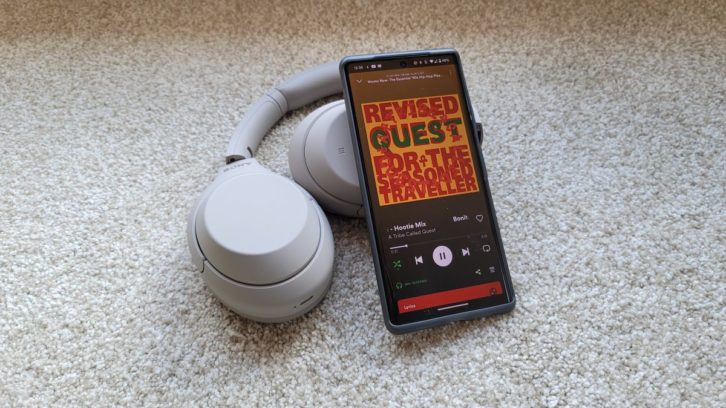
On the opposite end, the WH-1000XM4 provides more ANC personalization with both manual and automatic settings. It delivers the signature bass performance one expects from a Sony audio product, and the emphasized low end doesn’t compromise the mid or high range. Series staples like one-tap NFC connectivity remain intact; this is absent on the latest model. The touch controls work much better. Then there’s the design, which is a separate argument (more on that later).
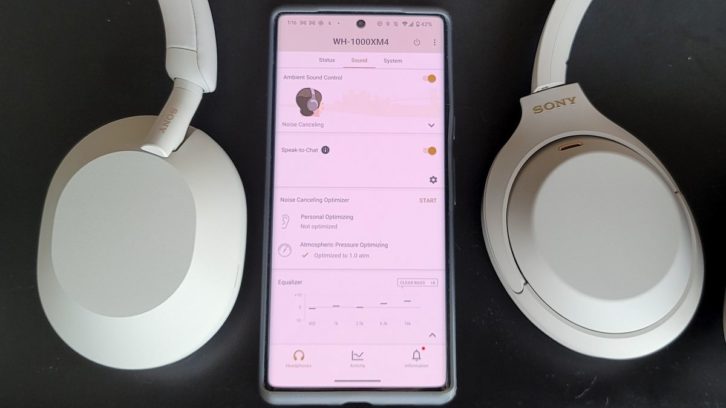
What’s most important is that the WH-1000XM4 carries nearly 85% of the same features, including proprietary technologies (e.g., 360 Reality Audio, Digital Sound Enhancement Engine, LDAC), and its noise cancellation is just as effective. You’re getting similar 3D sound performance and the same upscaled audio quality on lo-fi recordings via DSEE. Sony’s customizable EQ with well-engineered presets operates no differently. In addition, Bluetooth multipoint is available on both pairs of headphones to pair to two devices simultaneously.
Anyone who thinks the WH-1000XM5 is the superior model isn’t wrong. However, its upgrades aren’t massive. Core functionality and performance are similar between the two models as well.
Craftsmanship matters greatly for the price
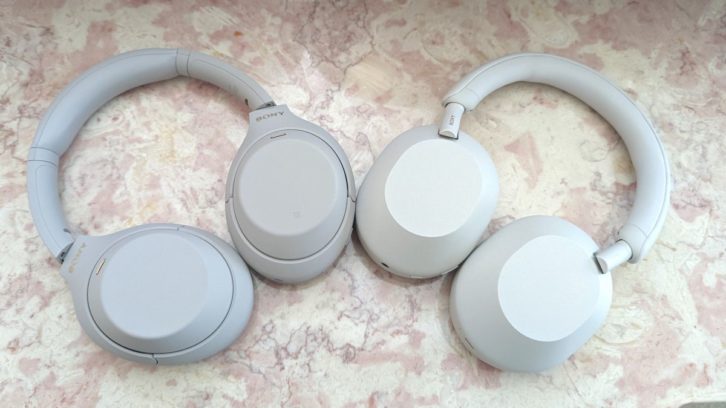
I don’t know if it’s due to supply chain issues, or Sony implementing the greedy business equation of brand recognition + cheaper materials + higher price tag = financial gain. All I know is the WH-1000XM5’s redesign is a step down from past releases. ABS plastics were used to construct these headphones, which makes them lighter, but also flimsy. I’m talking sub-$100-wireless-headphones flimsy. During testing, I feared breaking the hinges if dropped onto a hard surface at the wrong angle.
Even the carry case was botched. Don’t get me wrong because I’m all for tech companies employing greener manufacturing practices. It just didn’t translate well in the WH-1000XM5’s case. The exterior feels like a molded piece of cardboard, whereas the interior is fitted with soft-touch suede and has an integrated compartment that holds all the accessories. Chintzy is one word to describe the case compared to others in the category.
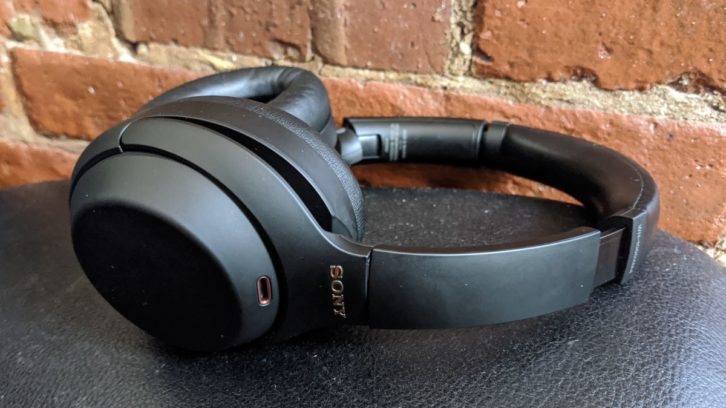
The WH-1000XM4 looks professional. It’s mostly built from sturdy, lightweight plastic. Small details like the gold embossed logos and mic openings add to its luxe appearance. The WH-1000XM5 may have received newer synthetic leather, but what you get on its predecessor is just as refined. Lastly, the WH-1000XM4’s soft rubberized finish feels premium.
More effort was put into the WH-1000XM4 case construction. Hard-woven fabric covers the entire frame, which also features a huge mesh pocket in the rear for additional storage. On the inside is a divider and a paper mold showing how the headphones must be stored, along with three small pockets that conveniently house the aux cable, travel adapter, and USB-C cable.
Call me crazy, but the aesthetic appeal and build quality of Sony’s older headphones seem more deserving of the $400 price tag.
A lower MSRP that drops frequently
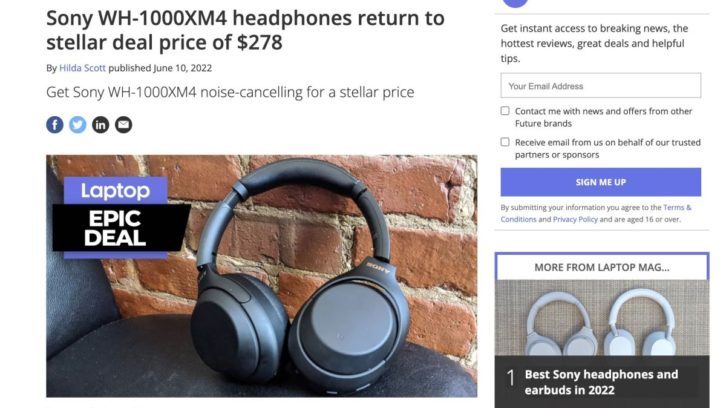
Sales often indicate several things: a product is either overstocked, unpopular or being discontinued.
Right now, the WH-1000XM4 sells for its original price ($349), but at least it’s more affordable. The odds of finding it cheaper over the coming weeks is also incredibly high. We’ve seen major online retailers discount the headphones every few weeks by up to 20 percent, bringing the price down to $279.
There’s an even greater chance you score a pair for less by holding out until the next annual shopping holiday. Take a look at this past Amazon Prime Day 2022 deal – the WH-1000XM4 dropped down to $228, which is its lowest markdown ever. Calling that a steal is an understatement.
Sony releasing the WH-1000XM5 for $50 higher than its predecessor, as well as $20 more than the category-leading Bose 700, was a ballsy move and a huge gamble. The decision shows the brand’s confidence in its products and market presence. It’s also unreasonably high.
Flagship headphones going on sale after only a few weeks on store shelves is rare, but not unheard of. Woot recently had a one-day flash sale that brought the WH-1000XM5 down to $339. Bigger retailers like Amazon and Best Buy are likely waiting to discount their stock (most likely on Black Friday). However, the optics of a new release receiving a substantial price cut four months after its launch aren’t good.
Outlook — purchase the WH-1000XM4, unless you can snag the WH-1000XM5 for much less
The number of improvements touted by Sony do not justify splurging on the WH-1000XM5. You get excellent ANC, battery life, sound, and extended functionality on the WH-1000XM4 for much less. Not to mention a more premium design.
Nevertheless, I’m realistic with my options. The WH-1000XM4 will probably be phased out over the next year or so (something most audio brands do to push their newest creations). I’m open to making the WH-1000XM5 my everyday wireless headphones, but if speaking for the average consumer who’s trying to get the most for their money, I’m waiting for Sony to drop the price by about $100.
Until then, I’m riding with the WH-1000XM4 until the battery or drivers blow out.
This article originally appeared on tomsguide.com.
See also: New Wireless Headphones Go ‘Beyond IPX8’ For Ultimate Waterproofing And I Want Them








